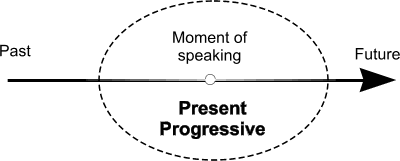English grammar
الجمعة، 26 أبريل 2013
Form of Present Perfect Simple
- P: He has spoken.
- N: He has not spoken.
- Q: Has he spoken?
Use of Present Perfect Simple
Present Perfect Simple is used for actions that started in the past and stopped recently or are still going on. The focus is on the result.
- Action that is still going onSituation that is still the same as it was in the past. We want to emphasise that the situation has not changed.Examples:Your advice has always been extremely helpful.We have not yet received a remittance for the goods supplied to you.
- Action that stopped recentlyAction that has just been completed. We want to emphasise the result.Examples:I have typed five letters.I have just received your mail.
- Action in the past that has an influence on the presentAction that was completed in the past, but has an influence on a present situation. Note that you must not give a certain time for the action in the past (if you want to use a time expression, you must use Simple Past).Examples:I have lost Misses Wilde’s phone number.We have agreed on the following points:
- Action that so far has taken place never, once or several timesAction that happened / did not happen in the past. We want to emphasise how often the action has taken place so far.Examples:I have never been to our New York subsidiary.Misses Newton has already phoned three times to inquire about the delivery of her goods.
The present progressive puts emphasis on the course or duration of an action.

The present progressive is used for actions going on in the moment of speaking and for actions taking place only for a short period of time. It is also used to express development and actions that are arranged for the near future.
Present progressive is also known as present continuous.
Form of going to Future
| positive | negative | question | |
|---|---|---|---|
| I | I am going to speak. | I am not going to speak. | Am I going to speak? |
| you / we / they | You are going to speak. | You are not going to speak. | Are you going to speak? |
| he / she / it | He is going to speak. | He is not going to speak. | Is he going to speak? |
Use of going to Future
- an action in the near future that has already been planned or preparedexample: I am going to study harder next year.
- a conclusion regarding the immediate futureexample: The sky is absolutely dark. It is going to rain.
| Simple Present | Present Progressive |
|---|---|
infinitive
(3rd person singular: infinitive + 's')
I speak
you speak he / she / it speaks we speak they speak |
form of 'be' and verb + ing
I am speaking
you are speaking he / she / it is speaking we are speaking they are speaking |
| Exceptions | |
Exceptions when adding 's' :
| Exceptions when adding 'ing' :
|
الاشتراك في:
الرسائل (Atom)